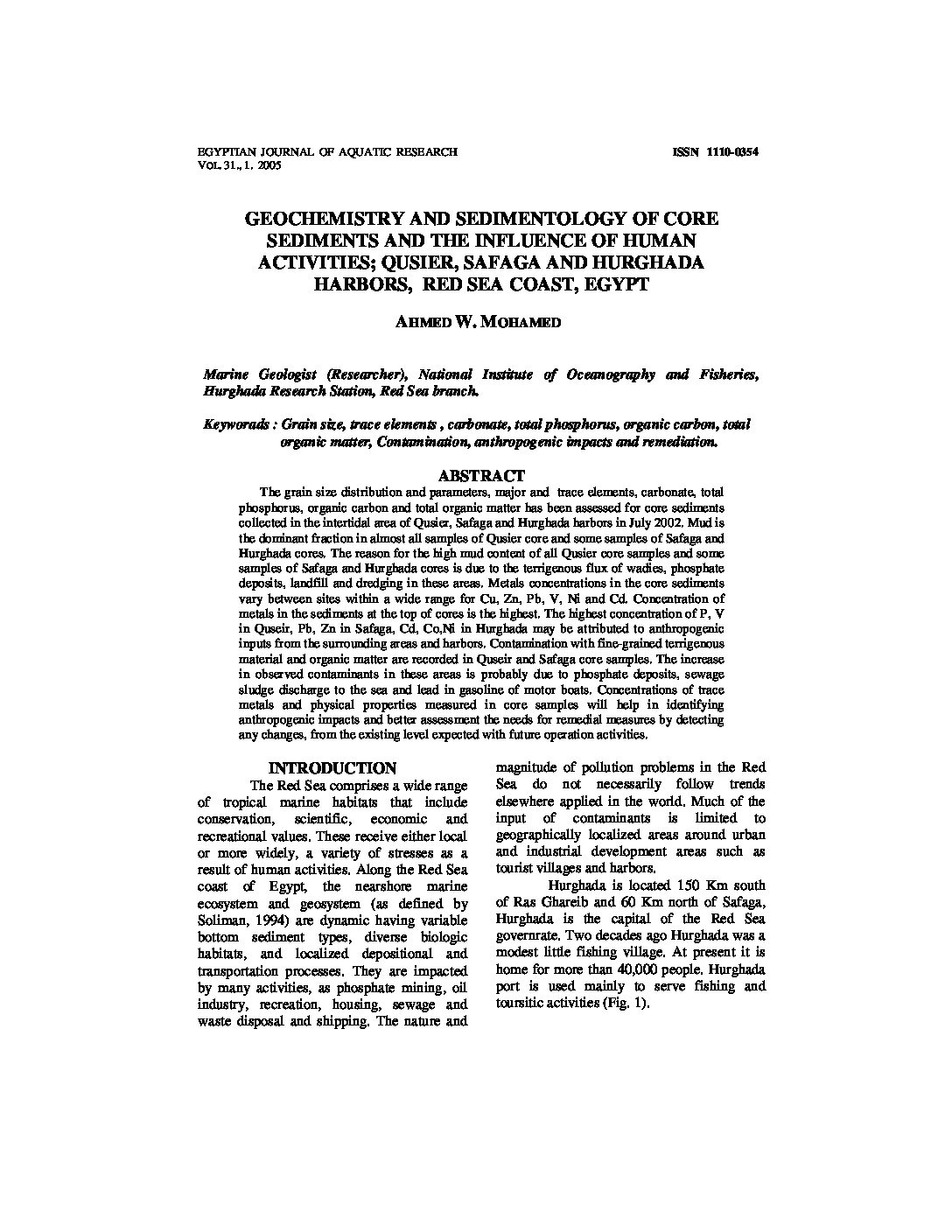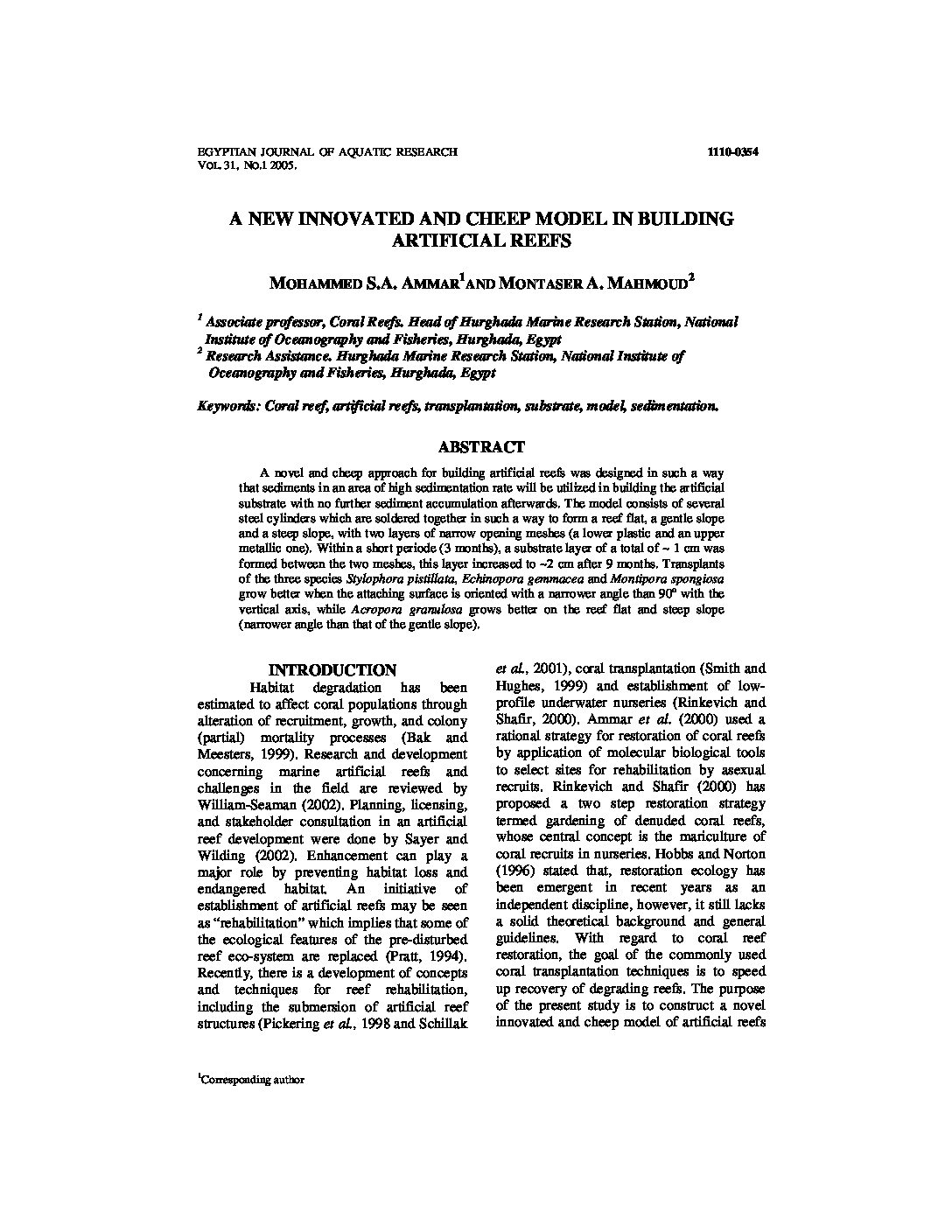Categories
vol-31GEOCHEMISTRY AND SEDIMENTOLOGY OF CORE
SEDIMENTS AND THE INFLUENCE OF HUMAN
ACTIVITIES; QUSIER, SAFAGA AND HURGHADA
HARBORS, RED SEA COAST, EGYPT
AHMED W. MOHAMED
Marine Geologist (Researcher), National Institute of Oceanography and Fisheries,
Hurghada Research Station, Red Sea branch.
Keyworads : Grain size, trace elements , carbonate, total phosphorus, organic carbon, total
organic matter, Contamination, anthropogenic impacts and remediation.
ABSTRACT
The grain size distribution and parameters, major and trace elements, carbonate, total
phosphorus, organic carbon and total organic matter has been assessed for core sediments
collected in the intertidal area of Qusier, Safaga and Hurghada harbors in July 2002. Mud is
the dominant fraction in almost all samples of Qusier core and some samples of Safaga and
Hurghada cores. The reason for the high mud content of all Qusier core samples and some
samples of Safaga and Hurghada cores is due to the terrigenous flux of wadies, phosphate
deposits, landfill and dredging in these areas. Metals concentrations in the core sediments
vary between sites within a wide range for Cu, Zn, Pb, V, Ni and Cd. Concentration of
metals in the sediments at the top of cores is the highest. The highest concentration of P, V
in Quseir, Pb, Zn in Safaga, Cd, Co,Ni in Hurghada may be attributed to anthropogenic
inputs from the surrounding areas and harbors. Contamination with fine-grained terrigenous
material and organic matter are recorded in Quseir and Safaga core samples. The increase
in observed contaminants in these areas is probably due to phosphate deposits, sewage
sludge discharge to the sea and lead in gasoline of motor boats. Concentrations of trace
metals and physical properties measured in core samples will help in identifying
anthropogenic impacts and better assessment the needs for remedial measures by detecting
any changes, from the existing level expected with future operation activities.







